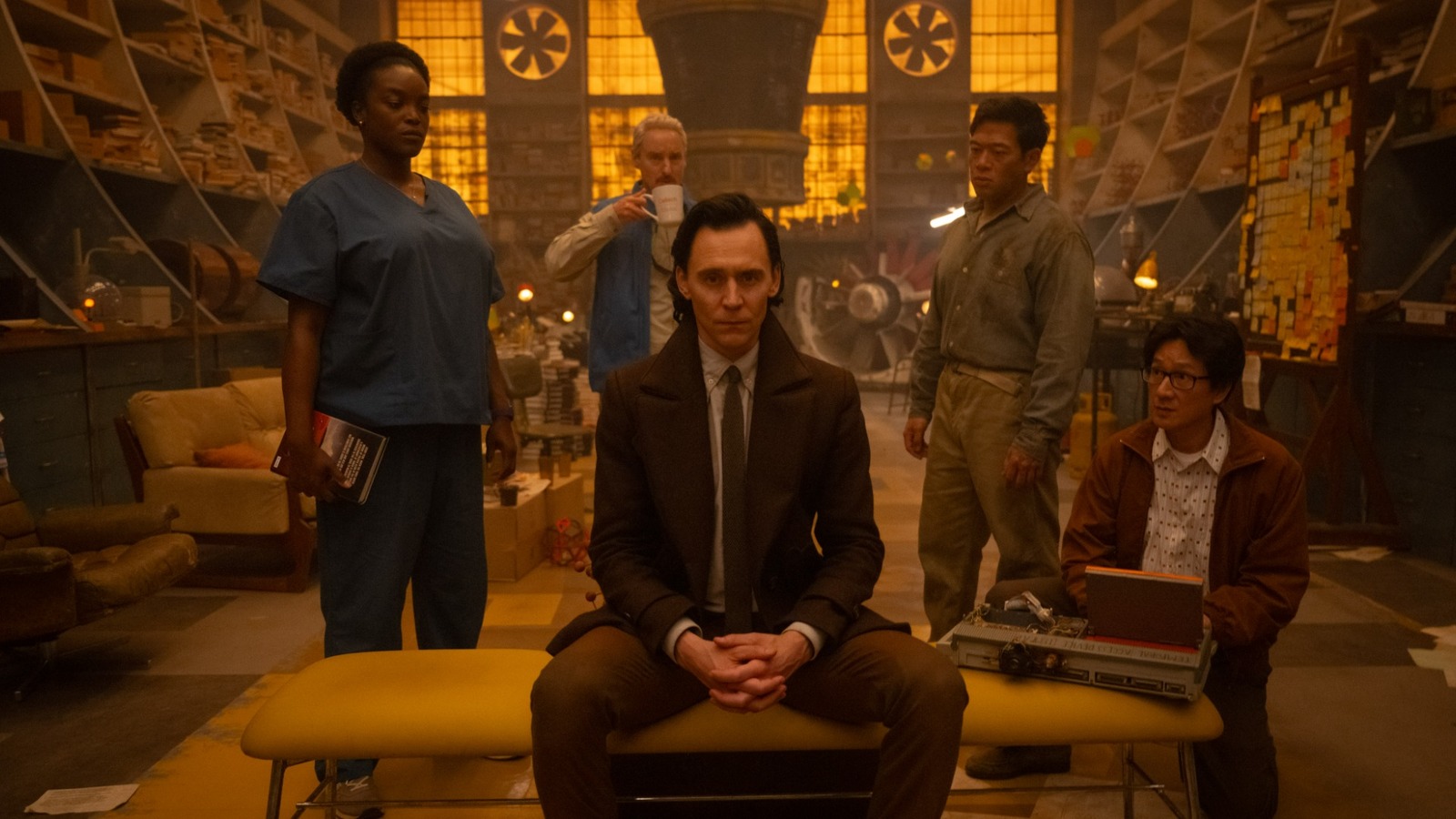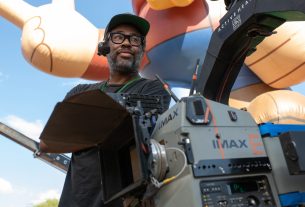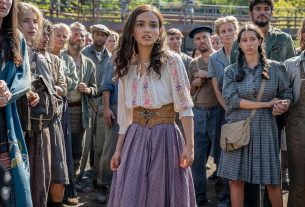
That makes sense. A lot of prioritizing, it sounds like. You also made some particular lighting and color choices for the time periods. Can you talk me through the season’s lighting design? I’m especially curious if the VFX impacts the lighting design as well. I guess I’ve never thought about that before.
It’s interesting. The idea was, I wanted the lighting to feel like the production design feels. It felt like there was an opportunity to unify the aesthetics of the lighting and the production design even more than they had been before. And we looked at films like “2001: A Space Odyssey” or even some “Godzilla” films, and I looked at “Live and Let Die,” the first Roger Moore Bond film, really trying to give it that late ’60s, early ’70s feel with the lighting. Of course, the lighting was harder then, in general, and that look, even though it’s fun, you wouldn’t want to do it for an entire production. So it was more about taking the spirit of that lighting than the direct aesthetic approach they were using back then.
That meant a couple of things. It meant switching the lighting of the show to tungsten, where previously all the sets and the TVA had been lit with LEDs. We reconstructed the sets in London. The first season was [shot] in Atlanta, so everything was rebuilt from the ground up anyhow, but we put tungsten everywhere, which, tungsten is the type of lighting they used back in the day, until very recently. It’s actually a filament that gets hot, and that’s where the light comes from. Because the source of the light is similar to the sun itself — glowing chemicals, basically, there’s nothing electronic about it, it’s a chemical reaction that’s happening — it creates a broader spectrum of light. You can actually measure it. You take a light meter or a color meter, and you can measure how many colors are in it that compose the whiteness, because white light is actually the sum of every color of light happening all at once simultaneously.
So when you use tungsten light, you get a very broad, full spectrum that even though it’s hard to put your finger on it, and it doesn’t always show up in side-by-side tests, the net effect overall is just undeniable. It looks fuller and richer, and the colors that it touches look richer and more saturated and vibrant, and everything just feels more organic and tactile. So that, I think, really clicked with the production design, which hearkens back to that, again, late ’60s, early ’70s kind of a thing. There’s Soviet stuff and there’s brutalist stuff, and then there’s more whimsical mid-century modern stuff all kind of blended together. So the approach was that, it was, “Let’s switch to tungsten.”
It was also, “We have to light the spaces, not shots.” I wanted to move entirely away from having any lights on the set. So we worked very closely, [production designer Kasra Farahani] and I, to make sure that each set had enough light sources built into it that I felt it would key the characters appropriately. A lot of times that is just some big soft overhead source, an example being in the chrono monitor wing: The whole ceiling is a light, basically. When your entire ceiling is a light, hopefully you don’t need to put any lights on the floor. So not every set is quite so simple, and not every set you can just make the ceiling a light. That would get monotonous anyhow. But we worked together to make sure that we felt that there would be enough light and the right type of light on each set. [It’s] primarily overhead lighting. You’ll notice almost every set is lit from overhead.
The challenge that creates, and the reason why in that circumstance, why most productions still end up putting lights on the floor, is because of eyelight. Because when the light’s coming from up there, a lot of times those characters get those dark eyes. That was the major challenge, but we solved it with a battery-powered handheld eyelight that was operated by a “spark,” as they refer to them in England, who followed the characters and the camera everywhere, just holding this little LED ball of light. We had to cheat. We had to use LED, because it had to be on a battery in a backpack. Also, I’m there in the tent adjusting the level of it. It gets further away or closer, so you’re kind of wirelessly always massaging the level of this little eyelight and just maintaining that ping in the actor’s eyes. It was clear really quickly: As long as we had that little ping in there, we could get away with murder in terms of how much from above the light was coming from.




